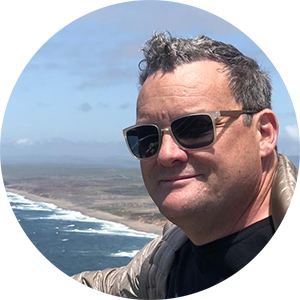
By David Eden, Sales and Marketing Lead
So, this is it. You have come up with an idea for the next market-leading medical device! Now you are thinking…what’s next? What’s my plan to get this done?
In this blog, the second in PRG’s series on developing successful medical devices, we answer these questions so that you can determine if your device idea is one that will resonate with your target audience and find success in the market.
Having that “light bulb” moment and knowing you have an idea for a great product is exciting. Oftentimes people in these situations then turn to those who they know well for validation of their idea. While this is fine to do, many of these people may be biased because of their relationship to you and say things like: “Wow, great idea! Go for it. I’ll buy your product”. What you really need to do is pinpoint who your potential customers are and what they think of your idea. Even if the feedback is negative at first, it can be incredibly valuable and guide you to make decisions about the product before you spend too much time and resources on developing it and bringing it to market.
There are several ways that you can go about eliciting market feedback. The first step is to answer the question that your potential investors will ask up front: “How big is the market for your product?” These markets are usually divided in to three nesting areas of volume: Total Available Market (TAM), Serviceable Available Market (SAM) and Serviceable Obtainable Market (SOM). Basically, you need to find out how many products you can expect to sell in the available market. For example, if this new product can only be used by doctors, then the TAM is the total number of doctors in the areas where you want to sell the device. That number will be reduced by the fact that not all doctors will want your product or be able to use it. This resulting number is the SAM. That number is further reduced to the amount of products you can realistically sell- this is the SOM.
One of the first things that you can do to help you to get feedback on your idea is to create a “day in the life of your customer” story that helps tell people how your new product will help them to do their jobs better or make their lives easier at work. This story is comprised of four parts:
1. What they need
2. What they care about
3. How they would use the product
4. Why they should care about you and your product
With this story in hand, you can start to conduct market surveys to gain real feedback on your idea. You can post surveys on a website, conduct focus groups, interview doctors or health providers; but, no matter the survey vehicle used, the most important thing to remember is that you are not asking only those questions which make you feel good about your idea. For example: “Would you like a shorter working day” is not a good question because there is an extremely high chance that most respondents will answer “yes.” Instead: “what could make your working day feel shorter?” is likely to yield much more useful data from the same person.
The questions you need to get real answers for are: Who are my actual customers and who will pay me money (this might not be the end user); How many of these people exist?; Who will use the product?; What are they looking for?; How badly do they need it?
At the end of this activity you will have a pretty good idea of whether your product can make it, and how to change the product if there’s not widespread support for it right now. You’ll then be able to build your business model, ready for the next stage of your product idea’s journey.

Stay tuned for our next blog, where we’ll explore further areas that are integral to your product’s success in the medical market, including understanding regulations and their impact on timelines, as well as reimbursement and your sales strategy.

David Eden is currently the Sales and Marketing Lead for PRG and also provides startup advisory services for all steps of the product journey. He has been advising startups for over ten years and ran innovation organizations at large corporations for many years before joining PRG.


